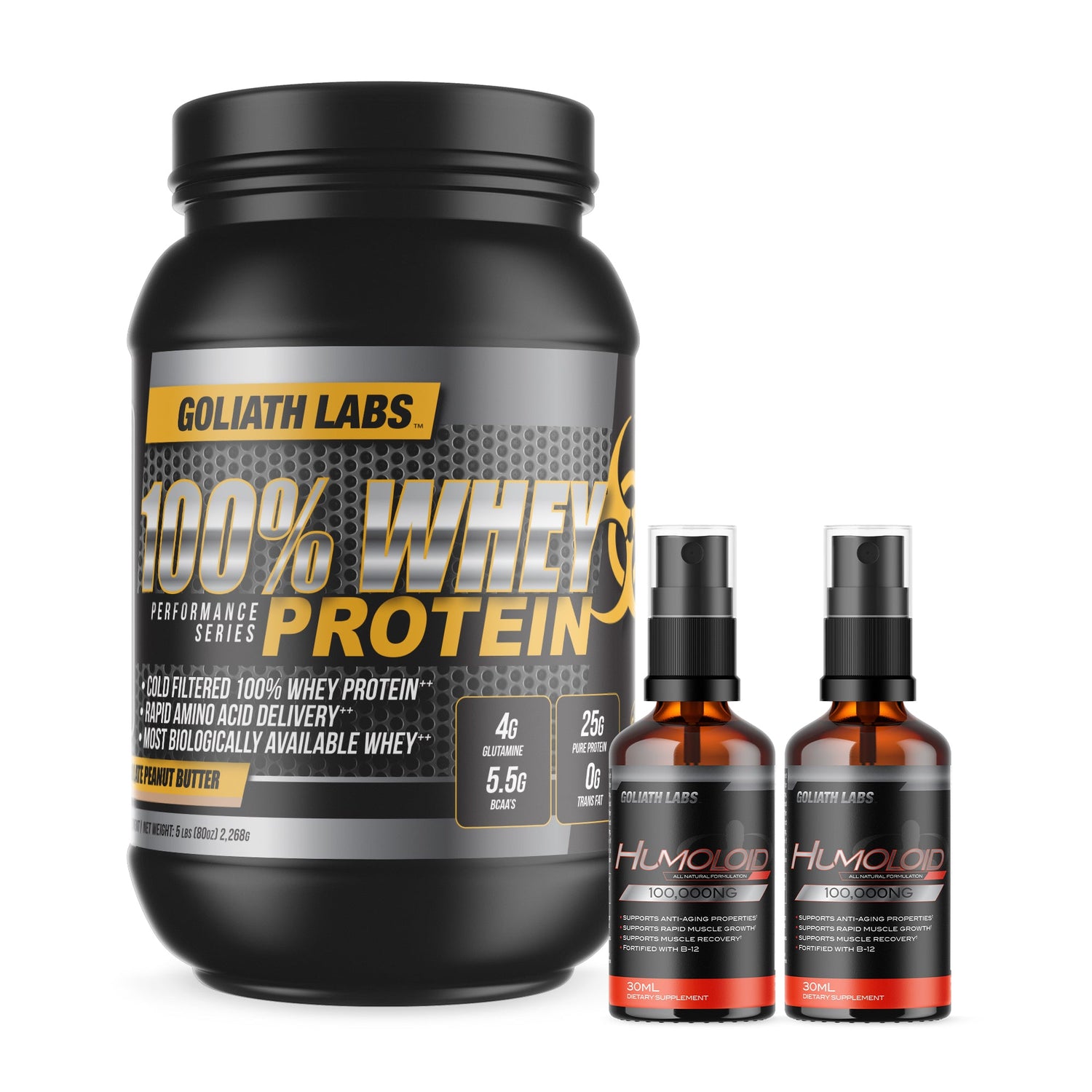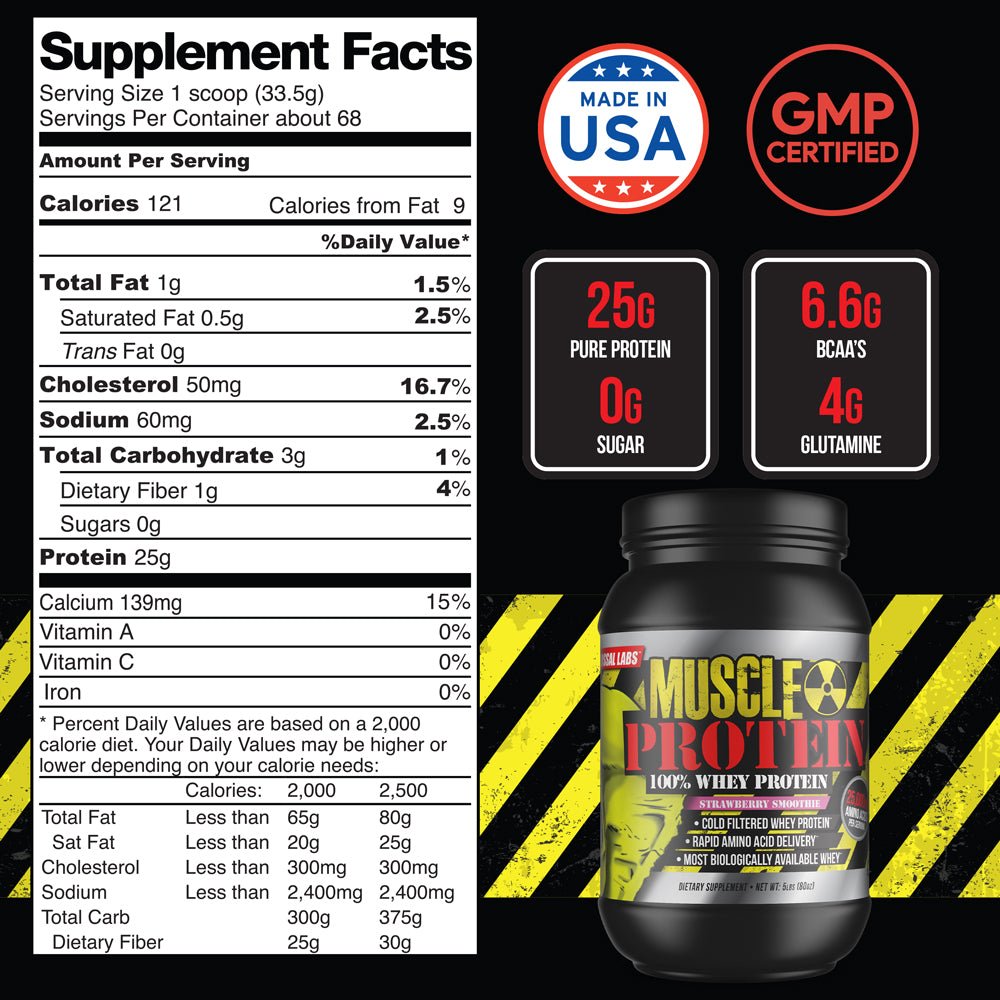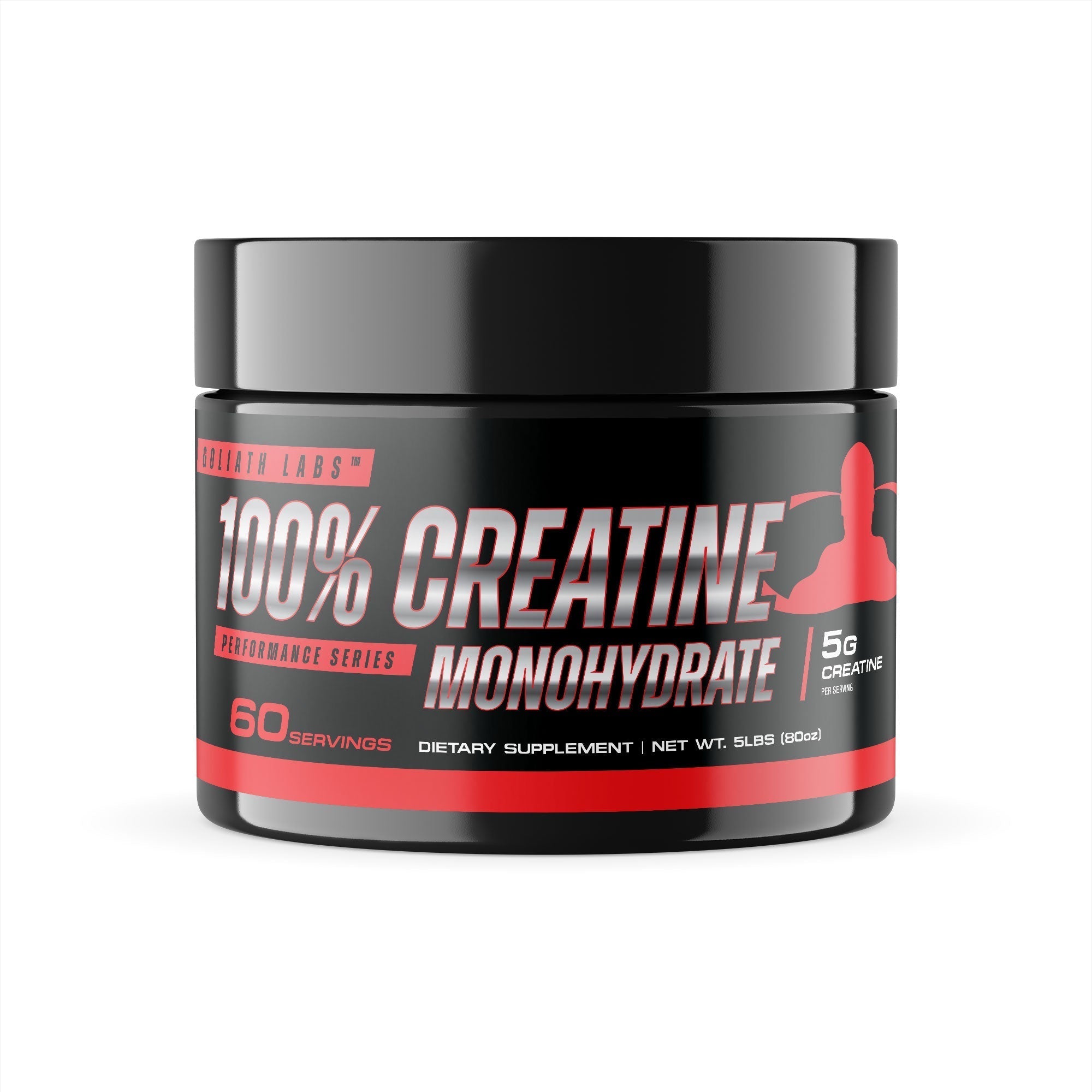Most whey protein labels promote purity, speed of absorption, and protein percentage, but they rarely clarify what truly separates one product from another.
-
“Isolate” typically refers to higher protein concentration with minimal fats and carbohydrates, making it a lean, fast-digesting option.
-
“Undenatured,” however, refers to preservation of the protein’s natural structure and bioactivity, features linked to immune modulation, antioxidant support, and neurotransmitter function.
These distinctions matter, especially if your goals extend beyond muscle hypertrophy into recovery, cognition, inflammation, or general wellness.
In this guide, we clarify the practical and physiological differences between undenatured whey protein and whey isolate. You’ll learn how processing methods influence functionality, why structure affects more than absorption rate, and which form of whey aligns with your needs.
Why Whey Isn’t Just Whey: What Most Guides Oversimplify
Whey protein begins as a liquid byproduct of cheese production, what’s left after curds are separated from milk. From there, manufacturers filter and dry the liquid to concentrate its protein content.
This filtration step determines whether the end result is a concentrate (moderate protein, higher fat and lactose) or an isolate (higher protein, minimal fat and lactose).
But filtration is only one part of the equation.
The more consequential difference lies in how the protein is treated during processing, specifically, whether it remains biologically intact or is denatured by heat or chemicals.
Most isolates are filtered for purity but exposed to high temperatures during drying or ion-exchange processes, which disrupt the protein’s native structure.
This means they deliver amino acids efficiently but may lack biologically active compounds like lactoferrin, immunoglobulins, and bonded cysteine, which are crucial for antioxidant defense and immune health.
In contrast, undenatured whey is processed under low temperatures that preserve the protein’s three-dimensional integrity, and with it, those functional peptides.
Some assume this distinction is irrelevant: “Aren’t all proteins broken down in the gut anyway?”
Technically yes, but research shows that intact whey fractions influence systemic pathways before digestion completes. These include glutathione production, serotonin synthesis, and immune signaling, none of which are supported by fully denatured protein.
The key difference isn’t just what nutrients the powder contains, it’s whether those nutrients are still functionally active when you consume them.
The Hidden Cost of Processing: What You Lose When You Prioritize Only Protein%
Most buyers prioritize protein percentage, understandably so.
Whey isolate typically contains around 90% protein by weight, with minimal fat and virtually no lactose. It’s efficient, lean, and effective for stimulating muscle protein synthesis. But purity doesn’t always mean functionality.
To achieve that protein density, most isolates are subjected to high-heat drying or aggressive ion-exchange methods that destroy sensitive bioactive compounds.
Denatured vs Undenatured: The Structural Difference That Impacts Results
Whey proteins are folded into precise three-dimensional structures.
These folds aren’t cosmetic, they enable the protein to interact with cellular receptors, bind to minerals, and initiate biological responses.
Denaturation, whether through heat, acid, or mechanical stress, unfolds that structure. The amino acids remain, but the functional properties of compounds like immunoglobulins, lactoferrin, and alpha-lactalbumin are lost.
Undenatured whey, by contrast, preserves those structures through low-temperature microfiltration. This means its peptides retain the ability to perform complex biological tasks, from immune regulation to antioxidant signaling.
Why Processing Temperature Isn’t Just a Technical Detail
Ion-exchange filtration, common in many high-protein isolates, involves harsh pH shifts and elevated heat exposure. It strips away not only fat and lactose, but also functional compounds that require gentle handling to remain intact.
Cold-processed whey avoids this by relying on cross-flow microfiltration, a physical method that separates particles without destroying their structure.
The difference? Only undenatured whey retains bonded cysteine, a precursor to glutathione, one of the body’s most powerful intracellular antioxidants. It also preserves immunoglobulins that modulate immune response and lactoferrin, which supports iron regulation and antimicrobial defense.
Systemic Benefits You’ll Never See on a Nutrition Label
Alpha-lactalbumin, retained in undenatured whey, is rich in tryptophan, a precursor to serotonin, which influences mood, stress response, and even sleep quality.
These effects are subtle but meaningful, especially for individuals managing high training loads, cognitive stress, or recovery deficits. You won’t see these metrics on a supplement facts panel, but they’re well-documented in clinical nutrition science.
When protein is treated as a macronutrient and nothing more, you sacrifice these advantages. The tradeoff isn’t just structural, it’s biological.
Protein Math vs Real Life: Why the Leanest Choice Isn’t Always the Smartest
A scoop with 25 grams of protein and near-zero fat or carbs looks ideal on paper.
But performance nutrition isn’t just a numbers game. If your protein causes bloating, misses key recovery markers, or offers no support beyond amino acid delivery, the efficiency is superficial.
Many isolates are optimized for macronutrient purity but lack the physiological support systems that athletes, and everyday users, depend on.
Whey isolate is often the default recommendation for lactose-intolerant individuals, and in many cases, that’s valid. However, cold-filtered undenatured whey can offer similar digestive comfort while retaining additional health-supporting compounds. This makes it viable even for users with sensitivities.
The assumption that isolate is the end-all solution ignores how people actually use protein day to day.
For many, stacking makes more sense: isolate post-training to trigger fast muscle protein synthesis, and undenatured whey during the day to reinforce antioxidant defenses, immune function, and cognitive recovery.
If your lifestyle includes physical stress, poor sleep, or mental fatigue, choosing a protein that only feeds muscles but ignores everything else may leave you hitting physical goals but feeling depleted.
In practice, the smartest choice is rarely the leanest, it’s the one that fits your system.
Is Your Protein Helping You Recover, Or Just Feeding a Macro Goal?
Recovery isn’t just about rebuilding muscle, it’s about restoring system-wide function.
If you train consistently, eat well, and still feel fatigued, mentally foggy, or prone to minor illness, the issue likely isn’t protein quantity. It’s the absence of biological co-factors that support deeper recovery mechanisms: antioxidant defense, immune surveillance, neurotransmitter balance.
This is where undenatured whey protein provides a distinct advantage.
At Goliath Labs, we don’t process protein for vanity metrics, we cold-filter to preserve function.
Our customers aren’t just bodybuilders chasing hypertrophy; they’re shift workers managing stress, parents training on minimal sleep, and adults over 40 maintaining energy in demanding routines.
For them, recovery isn’t a 30-minute post-lift window, it’s a 24-hour cycle of adaptation, resilience, and balance.
When you choose undenatured whey, you're not just feeding muscle tissue. You're supporting the cellular systems that allow you to train consistently, recover fully, and stay sharp outside the gym.
That’s a strategy, not a shortcut.
Let’s Talk Use Cases, Because This Isn’t Just About Muscle
Protein isn’t a one-size-fits-all tool. People come to supplementation with different goals, stressors, and physiological realities. Choosing between undenatured whey and isolate means identifying how your body operates, not just how your macros look on a spreadsheet.
Below are three distinct profiles we see often, each with different needs and outcomes.
The Working-Class Gym Guy
He trains four days a week, heavy compound lifts. But he’s also pouring concrete or managing a crew for ten hours a day. His recovery window is small, his energy drain constant.
Best fit: Undenatured whey mid-day, isolate post-training.
The isolate gives him rapid amino acid delivery after lifting. But during long workdays, a shake with undenatured whey supports sustained recovery, immune defense, and mood regulation, without bloating or insulin spikes that can crash energy.
The Burned-Out Parent Trying to Get Fit Again
She’s finally prioritizing health again. But she’s dealing with disrupted sleep, digestive sensitivities, and postnatal hormonal imbalances. The last protein powder she tried gave her cramps and brain fog.
Best fit: Undenatured, cold-filtered concentrate or isolate blend.
She needs more than muscle fuel. She needs stability. Undenatured whey preserves alpha-lactalbumin for serotonin support and bonded cysteine for cellular repair, helping her manage inflammation, mood, and digestion, all without GI distress.
The Macros-Or-Die Lifter
He’s counting everything. Macros. Sodium. Even fiber. He’s cutting for a shoot or competition, and every calorie counts.
Best fit: Whey isolate, optionally blended with recovery aminos.
For him, isolate’s lean profile and ultra-fast absorption are ideal. But if fatigue or elevated cortisol creeps in, even he may benefit from rotating in undenatured whey to support glutathione and mood regulation.
What to Look for When the Label Isn’t Telling the Whole Story
Supplement labels can mislead more than they inform. “Undenatured,” “clean,” and “bioavailable” are commonly used, but rarely defined. A protein powder that claims to be undenatured without disclosing its processing temperature likely isn't.
Similarly, “grass-fed” whey appeals to buyers focused on sourcing, but it has no bearing on whether the protein’s bioactivity was preserved. And when a label includes proprietary blends, it becomes impossible to evaluate what form of protein you’re actually consuming, or how much of it.
To make a smart choice, look for specific, verifiable indicators.
Cold-processing or cross-flow microfiltration should be clearly listed. These methods preserve fragile peptides without high heat or harsh chemicals.
A transparent amino acid profile shows the brand isn’t inflating numbers with non-protein nitrogen sources like glycine or taurine, a practice known as protein spiking.
Finally, third-party testing should be non-negotiable. It’s the only objective confirmation that what’s on the label matches what’s in the tub.
At Goliath Labs, we don’t rely on vague marketing.
Our cold-processed whey maintains structural integrity without the inflated pricing of boutique brands. We disclose our ingredients, avoid proprietary formulas, and never spike with cheap filler aminos.
Choose the Protein That Matches Your Physiology
There’s no universal winner between undenatured whey and isolate, only a better match for your needs.
Whey isolate delivers rapid protein with minimal extras, ideal for post-training recovery and body composition goals.
Undenatured whey, on the other hand, supports deeper biological functions: glutathione production, immune modulation, and cognitive resilience. If your routine includes stress, interrupted sleep, or extended fatigue, that matters.
At Goliath Labs, we formulate both. Our cold-processed isolate delivers purity without denaturation. Our undenatured whey retains functional peptides and never hides behind proprietary blends. Every product ships within 24 hours, with full transparency and no unnecessary additives.
Ready to upgrade from generic protein? Explore our protein lineup and choose the option that fits your biology, not just your training split.



